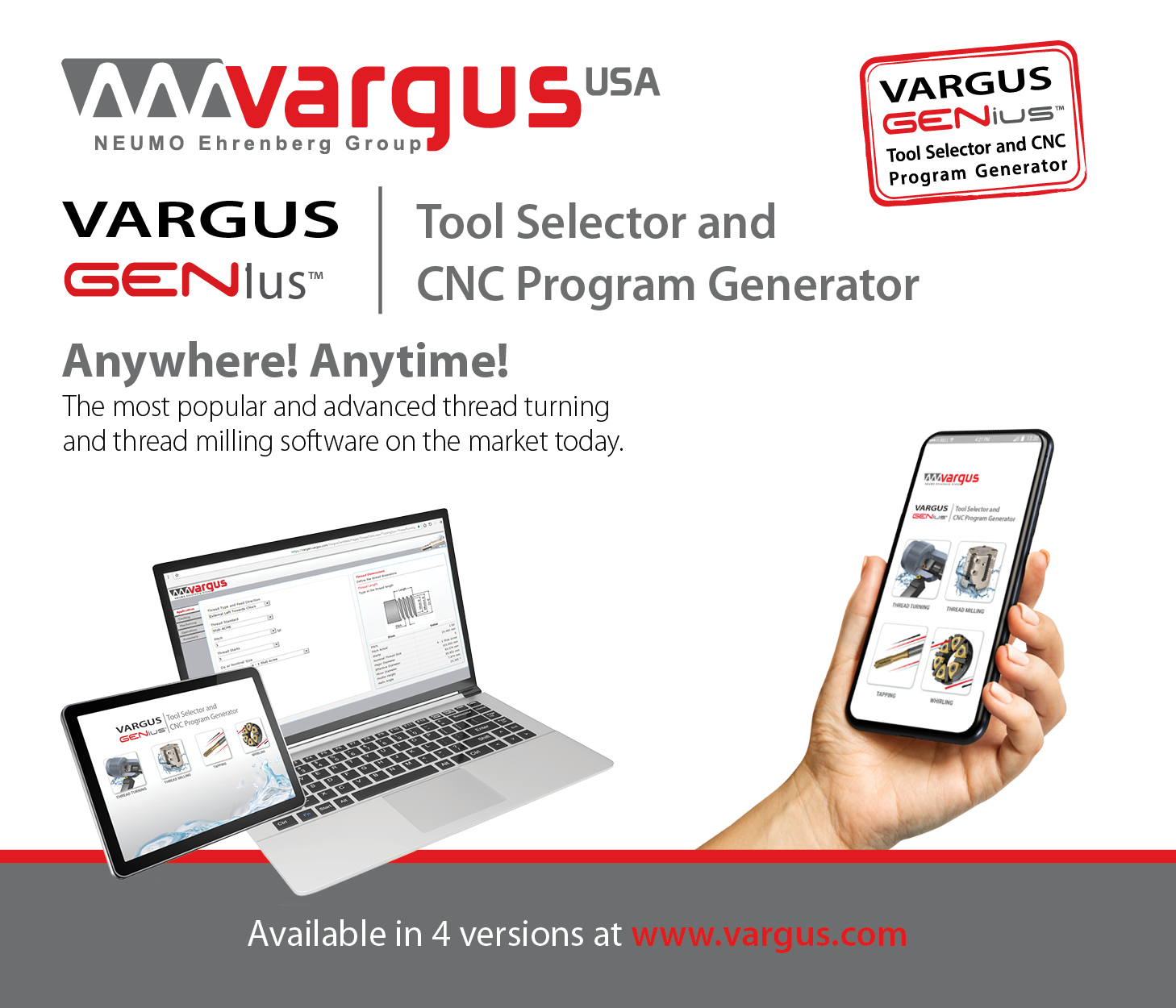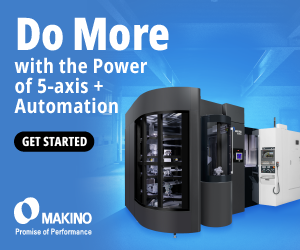Like many in the machining world, I’ve dealt with more than enough serious issues in 2013, so it’s cool to have been part of a fun experience.
Some quick background: Tomball, Texas, where our shop is located, has a sister-city relationship with Telge, Germany, because of the extensive German history in our area. It’s mostly a public-relations exchange program where city officials, business owners and residents visit each other’s city as guests.
As part of the sister-city exchange, a 19-year-old from Telge, Jannick Gerdes, would be staying in our community for 3 months. One of Jannick’s primary goals as an economics student was to improve his English. He also wanted to experience the “real America,” interacting with locals, driving a truck, eating American food and doing what we often take for granted.
The exchange program manager informed me that part of Jannick’s visit would include working at several local businesses as an intern, and asked if our shop would like to be a host company. The plan was to have Jannick work at a diverse group of companies, including a manufacturer.
My initial reaction was mixed. While we’ve participated in community activities, it never included a foreign intern. I wasn’t sure this would be a good fit, not to mention our busy workload meant employees wouldn’t have much time to entertain or instruct.
After giving it some thought, however, I decided to accommodate, determining a 2-week internship would be adequate. Still, I was not sure what to expect. In November, Jannick arrived with a huge smile and a level of excitement that was quite refreshing. He was eager to immerse himself and quickly became our friend.

As a part of a sister-city exchange, Jannick Gerdes interned at Crow Corp.
Some employees were skeptical about the benefit of an internship, but once they worked with Jannick and got to know him, their skepticism vanished. They realized we could have a positive impact on his life and help him understand America and manufacturing a little better.
Mind you, we didn’t have him set up a CNC mill or weld a drilling rig, but we exposed him to every department in our facility. Jannick followed an order process from initial inquiry, through estimating, engineering, purchasing, production, QC, shipping and final invoicing. We coordinated a 2-week schedule to ensure his experience was completed on time.
Jannick’s hometown is small and he had never been in a manufacturing plant before. Here, he was able to become involved in the daily operations. In the end, not only was he positively impacted, but our company was as well. Many of our employees had never had an opportunity to get to know anyone from another country and hear how their experiences compared to ours.
They appreciated Jannick’s desire to become fluent in English, which his economics professor in Germany told him was necessary to succeed in business. They laughed about his love of food so readily available here but not in Telge, such as barbecue and Mexican food. And they loved the toolbox-equipped 1996 Chevy pickup he drove, donated by a local family. All of this for no expense to the company except the time taken by employees.
In return, the employees earned Jannick’s respect and appreciated his admiration of the jobs they did. He helped us count, measure, assemble, sort, package and clean. He got his hands and clothes dirty and relished the smell of coolant. It was a surprisingly good experience and we made a lifelong friend—all because I went out on a limb and said “yes.” CTE
About the Author: Keith Jennings is president of Crow Corp., Tomball, Texas, a family-owned company focusing on machining, metal fabrication and metal stamping. Contact him at kjennings@jwr.com.Related Glossary Terms
- computer numerical control ( CNC)
computer numerical control ( CNC)
Microprocessor-based controller dedicated to a machine tool that permits the creation or modification of parts. Programmed numerical control activates the machine’s servos and spindle drives and controls the various machining operations. See DNC, direct numerical control; NC, numerical control.
- coolant
coolant
Fluid that reduces temperature buildup at the tool/workpiece interface during machining. Normally takes the form of a liquid such as soluble or chemical mixtures (semisynthetic, synthetic) but can be pressurized air or other gas. Because of water’s ability to absorb great quantities of heat, it is widely used as a coolant and vehicle for various cutting compounds, with the water-to-compound ratio varying with the machining task. See cutting fluid; semisynthetic cutting fluid; soluble-oil cutting fluid; synthetic cutting fluid.
- milling machine ( mill)
milling machine ( mill)
Runs endmills and arbor-mounted milling cutters. Features include a head with a spindle that drives the cutters; a column, knee and table that provide motion in the three Cartesian axes; and a base that supports the components and houses the cutting-fluid pump and reservoir. The work is mounted on the table and fed into the rotating cutter or endmill to accomplish the milling steps; vertical milling machines also feed endmills into the work by means of a spindle-mounted quill. Models range from small manual machines to big bed-type and duplex mills. All take one of three basic forms: vertical, horizontal or convertible horizontal/vertical. Vertical machines may be knee-type (the table is mounted on a knee that can be elevated) or bed-type (the table is securely supported and only moves horizontally). In general, horizontal machines are bigger and more powerful, while vertical machines are lighter but more versatile and easier to set up and operate.
- payload ( workload)
payload ( workload)
Maximum load that the robot can handle safely.




